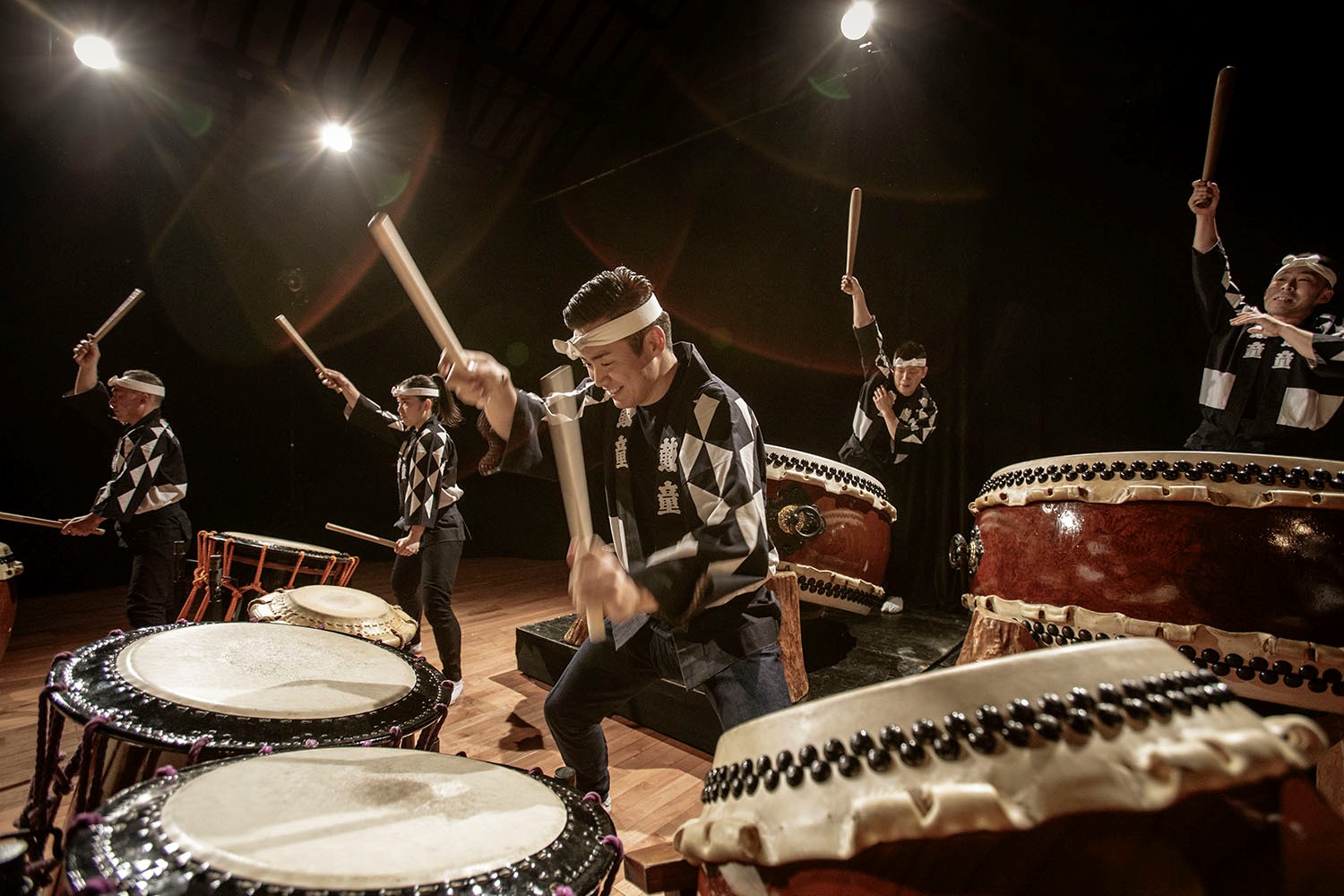Years ago, a small group of young people in Japan yearned for a new way of life. Disappointed with the direction of modern Japanese society and eager to rediscover traditional roots and values, they left their busy urban cultures behind and traveled north to remote Sado Island, in the Sea of Japan. The choice of Sado could not have been more fitting, because for centuries the island had been an isle of banishment for politicians, artists, writers and others who found themselves at odds with the established culture of the times. The group also had a vision of creating a school where the traditional Japanese performing arts could be learned by a new generation.
They found a home in an abandoned schoolhouse by the sea and began to play the world's oldest instrument, the drum (taiko). Day and night, they expressed their hope and fears, joy and wonder upon the taiko, learning its voices and ancient wisdom. To build endurance, they woke before dawn and ran long distances through the bamboo forests and rice fields. Surrounded by Sado Island's rich performing arts traditions, they began to study other instruments as well — the shamisen, koto and shakuhachi. They explored dance, song, and stagecraft along with the taiko's limitless depth and range.
Soon, attracted by rumors of a new, creative lifestyle that drew inspiration from traditions and the natural world, others came to join them, bringing more ideas and energy. The group's numbers grew, years passed, and they practiced and trained both body and soul. In time, Sado Island's unique culture, its four powerful seasons and great natural beauty found expression in their art.
There was not only a primal fierceness and determination to their work, but a playful, child-like curiosity as well, a fundamental openness to the instrument's infinite potential. So they called themselves Kodo, which means “heartbeat” but also “children of the drum.” They also discovered that hearing the sounds of the great drum (o-daiko), carved from a single, massive tree trunk, babies fell fast asleep in their mothers' arms, lulled by the great heartbeat sound. Kodo learned that the sound of taiko is felt in the body as much as heard.
Kodo exploded onto the world stage at the Berlin Festival in 1981 and have since delivered over 3,400 performances in more than 46 countries, from war-torn Croatia to New York's Carnegie Hall. Through constant collaborations with musicians, dancers, singers and actors in many countries, Kodo relentlessly explores the limits of the taiko and the closely-related traditional Japanese performing arts. The group's many recordings are available worldwide.
Please note: Biographies are based on information provided to the CSOA by the artists or their representatives. More current information may be available on websites of the artists or their management.


